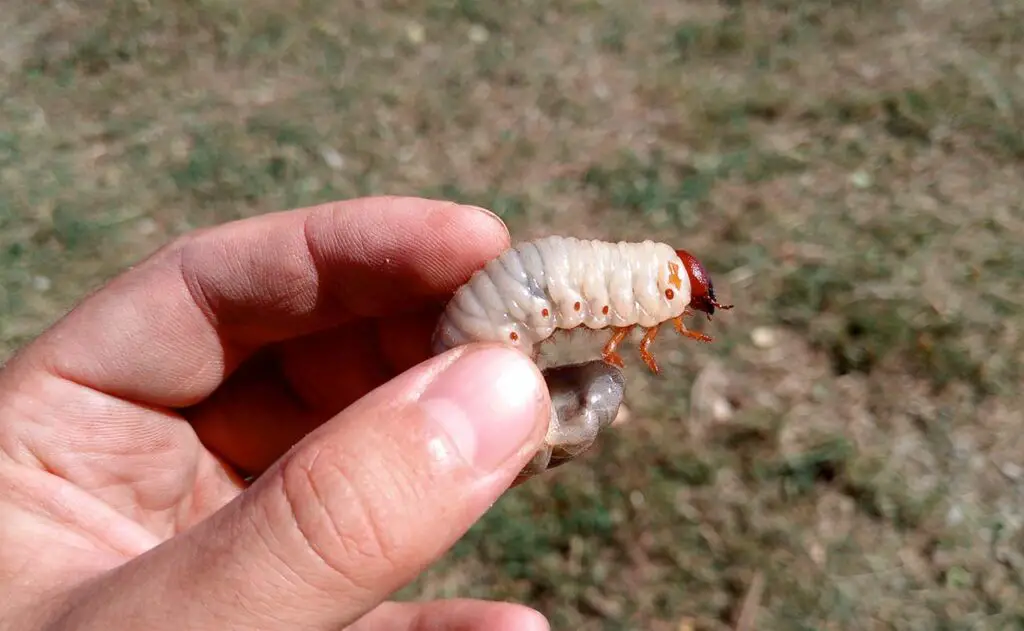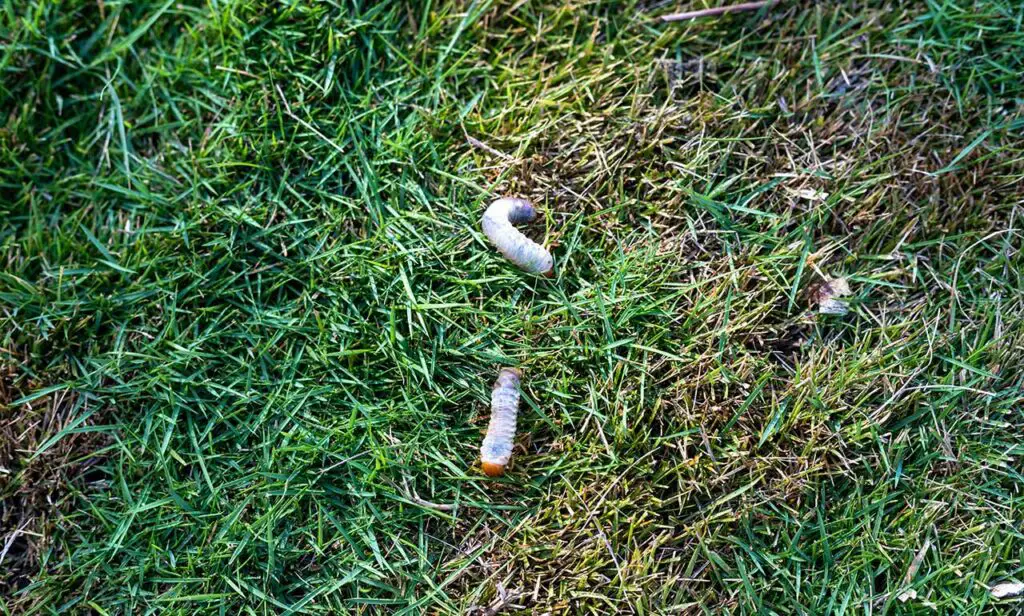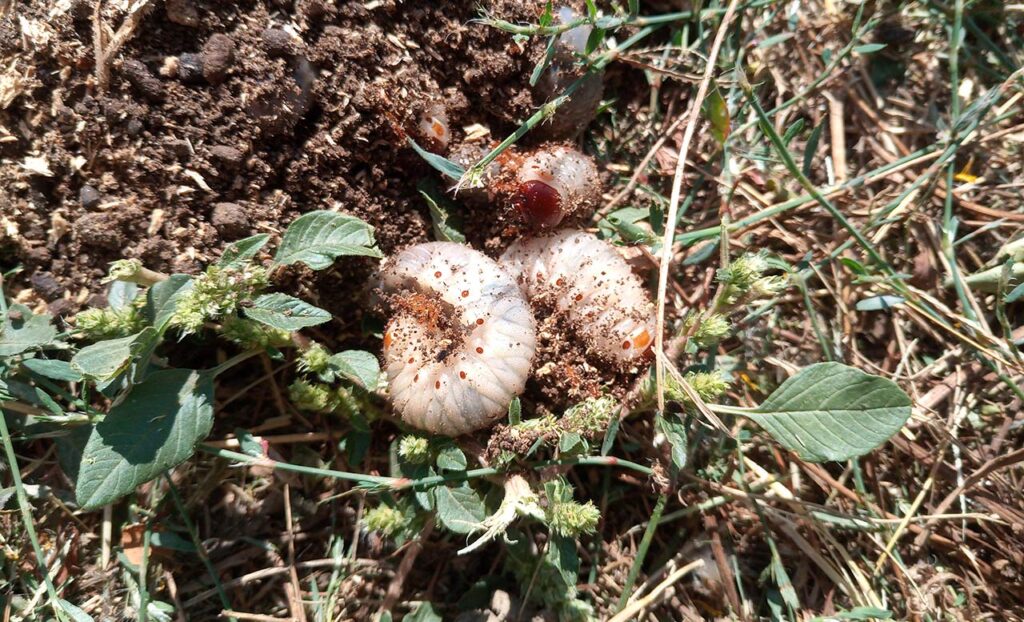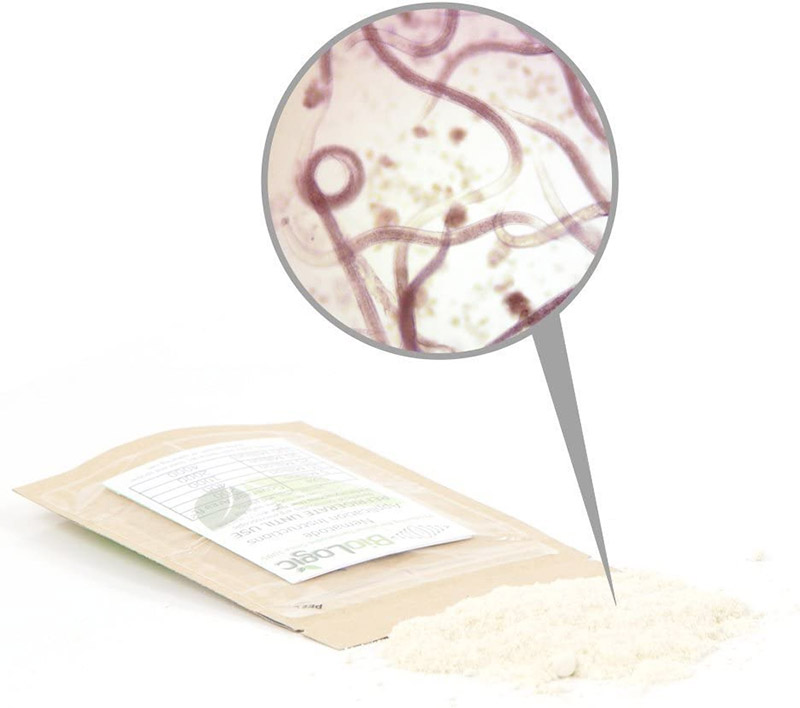Using Beneficial Nematodes For Grubs: What To Know
Nematodes are small, unsegmented worms that live in various environments, including soil and water.
Some species of nematodes are parasitic and can cause damage to plants and animals, while others are beneficial and can help control pests like grubs in lawns.
As you may know, grubs feed on the roots of grass, which means they can cause significant damage to lawns if left unchecked.
Applying chemical pesticides to control grubs can have negative impacts on the environment and other beneficial insects.
This is where nematodes come into play as a natural and environmentally friendly solution to control grub infestations.

What are Nematodes for Grubs?
Nematodes are microscopic, colorless, and predatory worms that occur naturally in the soil.
These beneficial nematodes are known for their ability to hunt down and kill pest insects, including grubs.
They enter the insect larvae through some small openings on the body and then they release this bacteria that actually attacks the pest from inside out, sterilizing it until it dies.
Several species of nematodes that are effective in controlling grubs, including Heterorhabditis bacteriophora and Steinernema scarabaei.
These nematodes are commonly used in biological pest control programs as they are environmentally friendly and non-toxic to humans and pets.
When applied to the soil, nematodes actively search for grubs and infect them with their bacteria.
The nematodes then feed on the infected grubs and reproduce, increasing their population and continuing the cycle of pest control.
Nematodes for grub control are most effective when applied during the early stages of grub development, typically in the spring or fall.
How Nematodes for Grubs Work
They are effective at controlling grubs because they enter the host insect and release bacteria that kill the insect.
The nematodes then feed on the bacteria and the dead insect, reproducing and continuing the cycle.
When applied to the soil, nematodes seek out grubs and enter their bodies through natural openings.
The nematodes then release the bacteria, which multiply and cause septicemia in the grub, leading to death.
The nematodes then feed on the dead grub and reproduce, continuing the cycle.
It’s important to note that nematodes are only effective against actively feeding grubs, so timing is crucial for successful control.
In general, nematodes should be applied when grubs are actively feeding, which is typically in the late summer or early fall.
Several species of nematodes are effective against different types of grubs.
For example, Heterorhabditis bacteriophora is effective against Japanese beetles, while Steinernema carpocapsae is effective against European chafers.
So you gotta pick the right species of nematode for the type of grub you are trying to control.
Benefits of Using Nematodes for Grubs
Here’s a quick look at the benefits of using nematodes to eradicate grubs.
Environmentally Friendly
Nematodes are a natural and environmentally friendly way to control grubs in your lawn.
Unlike chemical pesticides, nematodes are not harmful to beneficial insects, birds, or other wildlife.
Harmless to pets and humans, nematodes are microscopic worms that occur naturally in soil.
And they’re a safe and effective way to control grubs without harming the environment.
Effective
Nematodes are super effective when it comes to controlling grubs in your lawn.
They enter the grub through small little openings on the body and then release bacteria that attacks the pest from inside out, sterilizing it until it dies.
This means that nematodes are not only effective at killing grubs, but they also prevent future infestations.
Nematodes are best applied to lawns in late July/early August when the adults are laying eggs in the soil.
Affordable
Nematodes are an affordable way to control grubs in your lawn.
They are relatively inexpensive compared to chemical pesticides and available online or at your local garden center.
Nematodes are also easy to apply and do not require any special equipment.
They can be applied using a watering can or hose-end sprayer.
Overall, nematodes are a safe, effective, and affordable way to control grubs in your lawn.
They are environmentally friendly and do not harm beneficial insects, birds, or other wildlife.
Nematodes are easy to apply and can prevent future infestations.
When to Apply Beneficial Nematodes
Beneficial nematodes are effective in controlling grubs, but timing is critical.
The ideal time to apply nematodes really depends on the species of grub and weather conditions.
The nematodes should be applied when the grubs are active and feeding.

For most pests, the late spring and summer are the best times to apply nematodes.
However, for white grubs, it is recommended to apply nematodes later in the summer or early fall when more mature larvae are present and active.
Around two weeks after the first application, consider doing a second on to enhance grub control.
You should know that nematodes are sensitive to temperature and sunlight.
They should be applied when the soil temperature is in the 40’s to 70’s Fahrenheit.
Freezing temperatures may kill them, and hot temperatures over 80F can also kill them, especially if you’re applying them to the soil on a hot day and they end up frying before they can migrate deeper.
So we recommend you apply nematodes in the morning before the sun gets brighter, as strong sunlight can harm nematodes.
Another factor to consider when applying nematodes is soil moisture.
The lawn needs to be well-watered so the soil doesn’t go dry while you’re waiting on the nematodes to get established.
It’s essential that the nematodes are viable (living) when applied.
That’s why you gotta make sure that you’re buying nematodes from a reputable supplier.
And when you get them, you really gotta apply them right away.
How to Apply Nematodes for Grubs
Nematodes are a great natural control option for grubs, a pest that lives in lawns and eats the roots.
Applying nematodes take take care of grubs is something you gotta do in the morning before the sun gets too bright because strong sunlight can harm nematodes.
It is also crucial to apply nematodes when the grubs are actively feeding.
In the spring, this is when the soil begins to warm; and in the summer it’s mid to late August.
Before applying nematodes, you gotta prepare the lawn by mowing it and watering it well.
The soil need to be be moist but not waterlogged. It’s ideal to apply nematodes on a cloudy day or in the evening to avoid direct sunlight.
There are different ways to apply nematodes for grubs, including:
- Using a hose-end sprayer: Fill the sprayer with nematodes and spray the lawn evenly.
- Using a watering can: Mix nematodes with water and apply using a watering can.
- Using a pump sprayer: Mix nematodes with water and apply using a pump sprayer.
You gotta follow the instructions on the package carefully and apply the recommended amount of nematodes per square foot.
After applying nematodes, water the lawn well to ensure that the nematodes reach the soil and the grubs.
How Long Does It Take For Nematodes To Kill Grubs?
Nematodes are a natural and effective way to control grub infestations in lawns and gardens, but they need some time to attack and kill their host before moving on to the next one.
Plan for up to two weeks after applying nematodes to see a noticeable change in the grub population.

Infected grubs take on a brown appearance, but you might not see any dead grubs as the process happens from the inside of the pest.
The BioLogic Company recommends treating for grubs in late summer or early fall when the smaller, young grubs are the most susceptible to nematodes.
It’s important to treat at the right time to ensure the nematodes can kill the larvae and prevent new adults from emerging.
Bob Vila notes that nematodes will persist and continue to control grubs for up to 18 months, or two full growing seasons.
To apply nematodes, mix the nematode powder with 1 to 5 gallons of cool water and apply to the lawn with a sprayer or watering can.
Overall, nematodes are a safe and effective way to control grub infestations, but it’s important to be patient and understand that it may take some time to see results.

